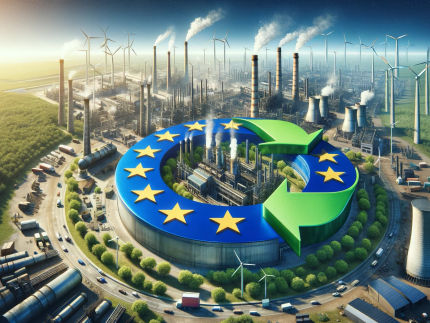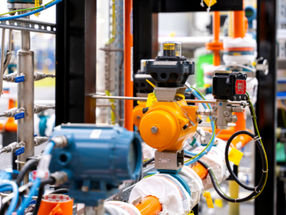Deep decarbonization of industry is possible with innovations
Advertisement
On behalf of the EU Commission, Fraunhofer ISI explored what contribution individual technologies can make to decarbonizing industry and how to support them. The study shows that it is possible to cut emissions by 95% by 2050. However, this requires innovative carbon-neutral technologies and comprehensive technological change – especially in basic materials industries. In addition, Fraunhofer ISI examined the role of an innovation fund to aid the market diffusion of these technologies using revenue from the EU emissions trading system.
Industry is responsible for about 20 percent of the EU-wide greenhouse gas emissions. It will have to reduce its emissions to almost zero by 2050 to meet the targets set in the Paris Agreement. The EU Commission has developed a strategic long-term vision for a climate-neutral European economy by 2050 and presented it for discussion at the Climate summit in Katowice.
On behalf of the EU Commission, the Fraunhofer Institute for Systems and Innovation Research ISI together with ICF Consulting Services Limited explored the contribution that individual technologies can make to decarbonizing industry and the possible paths that lead to this by 2050. The study “Industrial Innovation: Pathways to deep decarbonization of Industry” focused in particular on the industrial production of basic materials like steel, cement, ethylene, ammonia and glass: These account for the majority of industrial emissions and are simultaneously especially difficult to decarbonize.
The researchers used the FORECAST simulation model developed by Fraunhofer ISI that has a high resolution of technologies and calculated eight alternative scenarios. The results show that the greenhouse gas emissions of industry could be reduced by 80 to 95 percent by 2050 compared to 1990.
All the scenarios show that an ambitious improvement of energy efficiency can lower the costs of decarbonization and contribute substantial CO2 savings, especially in the next 10 to 20 years. But this will not be enough on its own to reduce emissions to the extent needed. A crucial factor is the rapid deployment of renewable energies to produce carbon-free electricity. This is so important because industry‘s electricity consumption could increase strongly up to 2050 – doubling or even tripling depending on the scenario. This would be the case especially if more and more electricity were to be used to generate process heat and if important processes in the chemical and steel industries were to be converted to hydrogen produced using electrolysis.
Reducing greenhouse gases by 95 percent and therefore achieving almost completely carbon-neutral industrial production by 2050 requires fundamental changes along the value chain. These include the diffusion of low-carbon cements, more efficient material use and a comprehensive recycling sector. Capturing and storing CO2 can also play a role, for example, in reducing the remaining emissions from producing cement-clinker and lime.
Supporting carbon-neutral production processes
As the study shows, the ambitious transformation required is not possible with the technologies available today and under the existing regulatory framework. Dr. Tobias Fleiter, who heads the project at Fraunhofer ISI, emphasizes “Innovative technologies must be ready for the market between 2020 and 2030, infrastructure constructed and the regulatory framework adapted. This requires a comprehensive mix of instruments that supports the research and development of carbon-neutral production processes and the creation of niche markets for low-carbon basic products, among other things. It is key to change not just the basic materials industries themselves, but to integrate the entire value chain. As the biggest consumer of carbon-intensive products like steel, cement and glass, the construction sector in particular should be guided by the CO2 emissions embodied in the construction materials. This is why the cost of CO2 emissions must be factored into the prices for using these products”.
One step towards developing carbon-neutral production processes is the innovation fund (IF) currently being prepared by the EU Commission: From 2021, it should use revenue from the emissions trading system to fund research and development on decarbonizing industry, among other things.
The design of the IF and its impacts on the environment and the economy formed the focal point of another study for the EU Commission by Fraunhofer ISI in cooperation with Ecofys. For the project coordinator, Professor Wolfgang Eichhammer from Fraunhofer ISI, the IF is “an important step to fostering innovative carbon-neutral industrial processes: Despite the recent sharp increase of the CO2 price in the emissions trading system, on its own, this will not be sufficient to make these innovative technologies economically viable in the foreseeable future. This is why companies engaged in global competition are reluctant to apply these technologies on an industrial scale. Over the next one to two decades, however, the rising CO2 price will make today’s standard technologies that are based on fossil energy sources increasingly uneconomical. The IF therefore constitutes an important building block to making these technologies economical during the initial phase and to lowering the risks for companies.”































































